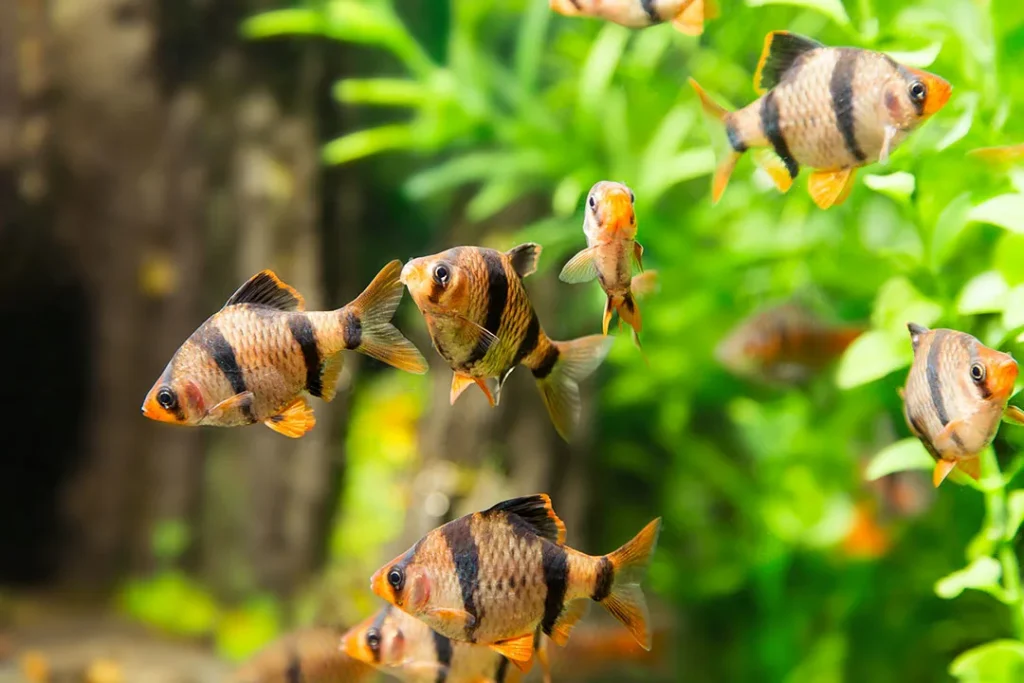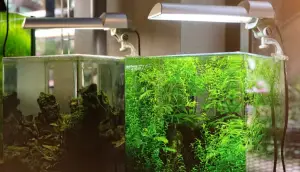“Fish Acclimation” may be a new term for newly engaged fish enthusiasts, but experienced fish keepers are entirely familiar with this.

Most fishes and other aquatic animals are vulnerable to the condition of their environment and the water in which they live. Because of this, it is essential to acclimate the fish to its new environment before putting it in the aquarium. But what exactly is Fish Acclimation?
Fish Acclimation is the process through which fish adapts to changes that occur in its environment, such as a change in water temperature, pH, acidity, turbidity, etc.
After bringing fish into your home, you may acclimate them to their new environment in a variety of different methods. Let us discuss all the methods by which you acclimate fish.
Acclimating Your Fish
The process of acclimatization often involves two major methods/approaches.
1. The Floating Bag Method
2. Drip Acclimation Method
Floating Method
Most aquarium fish can be acclimated using the Floating Method, which involves adding aquarium water to the floating bag in 1/2 cup increments. However, it is advised to use the Drip Method of acclimatization for fish, invertebrates, and corals that are more delicate.
Preparation Before Introducing The Fish To The Aquarium
Turn off the light in the aquarium, and reduce the brightness in the aquarium room. Do this before you take your fish from the transporting container since fish are light sensitive and may become stressed if there is a rapid shift in the illumination.
Doing this will prevent your fish from being harmed and help them adjust more quickly to their new surroundings.
Float The Bag In The Aquarium
Your fish most likely came from a local pet shop in a plastic bag with rubber bands at the top. Since you want your fish to remain in the water it was caught in for the first 20–30 minutes; you need to ensure the bag is airtight before removing it from the aquarium.
To start the process, just place the bag on top of the water in the holding tank for confinement. The fish bag needs to be able to float on the surface of the water.
Prepare a timer for a period of 15 minutes. During this period, make sure to keep a close check on the bag to ensure that it does not topple over or become loosened. In this manner, the temperature of the water in the bag will eventually become equivalent to that of the water in the tank.
Add Aquarium Water To The Bag
After that, cut it from just below the rubber band. Take the top edges of the bag and roll them down about an inch. This will result in the formation of an air pocket. As you pour water from the tank into the bag, the bag will remain afloat thanks to the pocket on its bottom.
At regular intervals of 5 minutes, pour water into the bag. Obtain a cup for measuring. Put a half cup of water from the aquarium inside the bag.
Give the bag a further 5 minutes to float in the water. After the first 5 minutes, another half cup of aquarium water should be added to the bag.
Release The Fish Into The Aquarium
To release fish into the aquarium, you will need a piece of net. Put your net into the bag, and then use the net to scoop up the fish. The fish should be carefully removed from the bag and placed in the aquarium.
When you are moving your fish into the larger tank/aquarium, do so carefully yet quickly. You do not want to keep your fish out of the water for an extended period of time.
Drip Method
The drip method is precisely what it sounds like: you take water from your existing fish tank and slowly pour it into the new bag containing your fish.
As is the case with the float method, it is highly recommended that you begin by contacting your neighborhood pet store in order to obtain information regarding the parameters (such as temperature, pH, and salinity levels) that your fish will require in order to make the transition as quickly as possible.
When you are ready to put the new fish into the aquarium tank, empty the packed shipping bag into the bucket, and position the bucket next to the tank. Add an adequate quantity of additional water, so the fish are entirely submerged.
After that, add an air pump as an additional step if you are concerned about the quantity of air in the water. This will increase the amount of dissolved oxygen in the water and help prevent shock in your new fish before the transfer.
As soon as the water level in the bucket has risen to around one- to two-thirds of what it was initially, take readings of the temperature, acidity, and salinity to see whether or not they have achieved the same values as those in your aquarium.
As soon as you observe that the pH, salinity, and temperature of the water in the aquarium have adapted to the same level as those in your tank, transfer your new fish directly to the tank using a small net, and dump the surplus water that was in the bucket.
In order to make up for the water that was lost while your fish were being acclimated, you will need to add extra water to your aquarium. This means that you will be doing a healthy partial water change as part of the procedure!
Why Do You Need to Acclimatize Your Fish To Your Aquarium?
The new fish in your tank will have a better chance of surviving if you take time acclimating them, but this won’t prevent the spread of any illnesses or parasites they may harbor to your existing fish population.
What Happens If You Don’t Acclimate To Fish?

If you do not acclimate your fish before placing it in the tank, it will not be able to control the amount of salt produced by its body in response to the new environment.
A fish can die from an osmotic shock in as little as two or three days. It is also possible for it to cause the fish to become discolored, lethargic, have fast respiration, or hyperactive.
How Long Do Fish Need to Acclimate? Or How Long Do Fish Have To Acclimate To Water?
The period of time required for the acclimatization process should range anywhere from half an hour to one hour for almost every kind of fish.
Any time period that is too lengthy runs the danger of the water in the bucket or bag becoming poisonous due to the accumulation of waste. At the same time, any time period that is too short runs the risk of your fish not being adequately acclimated.
Can You Acclimate Fish Too Long?
The period of time required for the acclimatization process should range anywhere from half an hour to one hour for virtually every kind of fish.
Any time period that is too lengthy runs the danger of the water in the bucket or bag becoming poisonous due to the accumulation of waste. At the same time, any time period that is too short runs the risk of your fish not being adequately acclimated.
Should You Feed Fish After Acclimation?

There is no set protocol for feeding newly acclimated fish immediately, but the fish will let you know what they want. Some of the fish will instantly begin swimming about, while others may immediately start to hide.
A test of their appetite with a tiny amount of food will reveal whether or not they are prepared to take food. If this doesn’t work, give it a day to rest before trying again.
How Long To Acclimate fish To Saltwater? Or How Long To Acclimate Fish In A Pond?
Typically, 25-30 mins are required to acclimate fish to saltwater or pond.
How Long Should New Fish Sit in the Bag?
After ten minutes, unzip the bag and pour one cup of water from your aquarium into it. After that, close the bag again. Let it aside to float for another ten minutes.
Perform this procedure as often as necessary (usually 3-4 times) until the bag is filled. After that, you may use a net to move the fish from the bag into the tank. So, in total, 60 to 90 minutes are required for new fish to sit in the bag.
How Many Fish Can Be Added To A Tank At Once?
Putting an excessive number of fish into an aquarium all at once can throw off the balance of the water’s chemistry and cause the natural nitrogen cycle to come to a complete halt. As a general rule of thumb, you should not add more than three to four fish to your tank at one time.
Wait until you have finished cycling the nitrogen in your tank after introducing fish into it; only then can you introduce additional fish into the tank.
Conclusion
Never put a new fish in the tank without properly acclimating it first. Both the new fish and the existing fish in your tank may experience a great deal of anxiety due to this.
It is possible that you will be responsible for the death of your new pet if you do not go through the appropriate acclimatization procedure. Because of this, we ask that you kindly exercise caution and patience and follow the instructions that we have described above.

